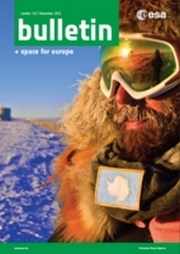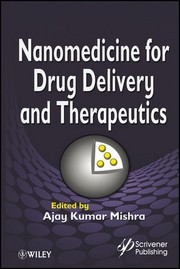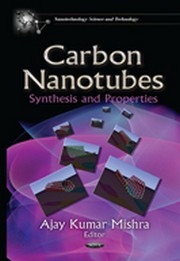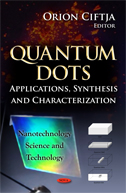

Vědět a znát, to mnohý by chtěl, ale učit se nechce.
Walther Von Der Vegelweide
Literatura
ACS z MENDELU
Je otevřen přístup do database časopisů ACS z MENDELU přístupového bodu. Využijte tyto přístupy maximální míře. Bohužel tento přístup byl nyní omezen na prohlížecí mód. http://pubs.acs.org/
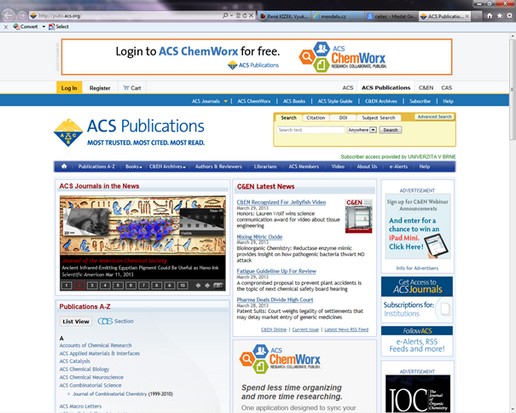 MicroRNAs (miRNAs) have been identified as promising cancer biomarkers due to their stable presence in serum. As an alternative to PCR-based homogenous assays, surface-based electrochemical biosensors offer great opportunities for low-cost, point-of-care tests (POCTs) of disease-associated miRNAs. Nevertheless, the sensitivity of miRNA sensors is often limited by mass transport and crowding effects at the water-electrode interface. To address such challenges, we herein report a DNA nanostructure-based interfacial engineering approach to enhance binding recognition at the gold electrode surface and drastically improve the detection sensitivity. By employing this novel strategy, we can directly detect as few as attomolar (<1, 000 copies) miRNAs with high single-base discrimination ability. Given that this ultrasensitive electrochemical miRNA sensor (EMRS) is highly reproducible and essentially free of prior target labeling and PCR amplification, we also demonstrate its application by analyzing miRNA expression levels in clinical samples from esophageal squamous cell carcinoma (ESCC) patients. doi:10.1038/srep00867
MicroRNAs (miRNAs) have been identified as promising cancer biomarkers due to their stable presence in serum. As an alternative to PCR-based homogenous assays, surface-based electrochemical biosensors offer great opportunities for low-cost, point-of-care tests (POCTs) of disease-associated miRNAs. Nevertheless, the sensitivity of miRNA sensors is often limited by mass transport and crowding effects at the water-electrode interface. To address such challenges, we herein report a DNA nanostructure-based interfacial engineering approach to enhance binding recognition at the gold electrode surface and drastically improve the detection sensitivity. By employing this novel strategy, we can directly detect as few as attomolar (<1, 000 copies) miRNAs with high single-base discrimination ability. Given that this ultrasensitive electrochemical miRNA sensor (EMRS) is highly reproducible and essentially free of prior target labeling and PCR amplification, we also demonstrate its application by analyzing miRNA expression levels in clinical samples from esophageal squamous cell carcinoma (ESCC) patients. doi:10.1038/srep00867
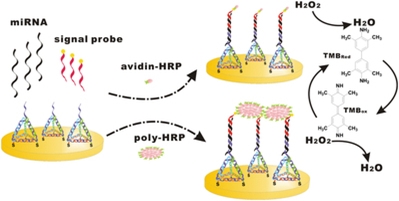
Carbon Nanoparticle-based Fluorescent Bioimaging Probes
 Fluorescent nanoparticle-based imaging probes have advanced current labelling technology and are expected to generate new medical diagnostic tools based on their superior brightness and photostability compared with conventional molecular probes. Although significant progress has been made in fluorescent semiconductor nanocrystal-based biological labelling and imaging, the presence of heavy metals and the toxicity issues associated with heavy metals have severely limited the application potential of these nanocrystals. Here, we report a fluorescent carbon nanoparticle-based, alternative, nontoxic imaging probe that is suitable for biological staining and diagnostics. We have developed a chemical method to synthesise highly fluorescent carbon nanoparticles 1–10 nm in size; these particles exhibit size-dependent, tunable visible emission. These carbon nanoparticles have been transformed into various functionalised nanoprobes with hydrodynamic diameters of 5–15 nm and have been used as cell imaging probes. doi:10.1038/srep01473
Fluorescent nanoparticle-based imaging probes have advanced current labelling technology and are expected to generate new medical diagnostic tools based on their superior brightness and photostability compared with conventional molecular probes. Although significant progress has been made in fluorescent semiconductor nanocrystal-based biological labelling and imaging, the presence of heavy metals and the toxicity issues associated with heavy metals have severely limited the application potential of these nanocrystals. Here, we report a fluorescent carbon nanoparticle-based, alternative, nontoxic imaging probe that is suitable for biological staining and diagnostics. We have developed a chemical method to synthesise highly fluorescent carbon nanoparticles 1–10 nm in size; these particles exhibit size-dependent, tunable visible emission. These carbon nanoparticles have been transformed into various functionalised nanoprobes with hydrodynamic diameters of 5–15 nm and have been used as cell imaging probes. doi:10.1038/srep01473
Sledujeme Prima ZOOM
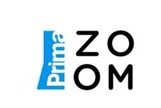 V pátek 1. února za první tři premiérové vysílací hodiny (20.00–23.00 hod.) dosáhl Prima ZOOM v CS D15+ podílu na trhu 6,49 % (sledovanost 224 tisíc diváků). Celodenní podíl pak činil i přes znevýhodnění pozdního začátku 2,50 % share. Podle dostupných informací tak jde i přes výše uvedené časové znevýhodnění o nejsebevědomější start nového kanálu od počátku digitalizace. Nejsledovanějším pořadem byl v pátek v této CS dokument Bizarní obyvatelé moří (21.00–21.50 hod.).
V pátek 1. února za první tři premiérové vysílací hodiny (20.00–23.00 hod.) dosáhl Prima ZOOM v CS D15+ podílu na trhu 6,49 % (sledovanost 224 tisíc diváků). Celodenní podíl pak činil i přes znevýhodnění pozdního začátku 2,50 % share. Podle dostupných informací tak jde i přes výše uvedené časové znevýhodnění o nejsebevědomější start nového kanálu od počátku digitalizace. Nejsledovanějším pořadem byl v pátek v této CS dokument Bizarní obyvatelé moří (21.00–21.50 hod.).
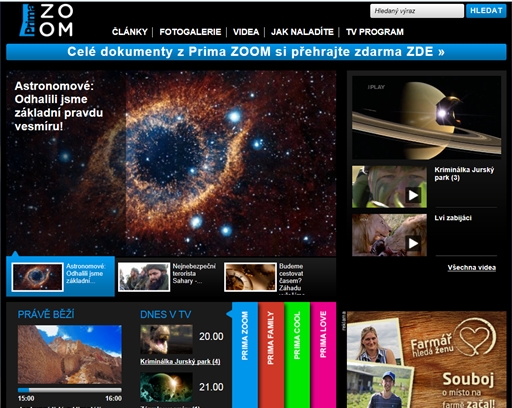
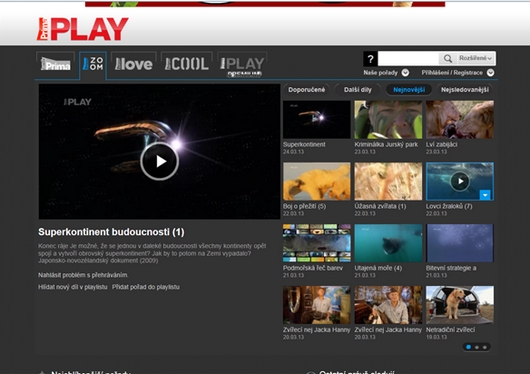 Ujít si ho nenechalo 286 tisíc diváků (7,74 % share).Že se v pátek večer nejednalo pouze o úvodní náhodný výsledek, potvrdila Prima ZOOM hned v sobotu, kdy přes velkou konkurenci sportovního přenosu v CS D15+ vystoupal celodenní podíl na trhu na 4,93 % share. Nejsledovanějším sobotním pořadem byl v této cílové skupině dokument Krokodýlí král, který si po desáté večer pustilo 204 tis. diváků (6,61 % share).A do třetice všeho dobrého se nový kanál výrazně prosadil i v neděli 3. února, kdy v CS D15+ dosáhl jeho celodenní podíl 4,65 % share. Tentokrát byl nejsledovanějším pořadem historický dokument Tajemná smrt Kleopatry, vysílaný po druhé hodině odpolední. Sledovalo ho 194 tis. diváků (7,72 % share). O mnoho pozadu nezůstal ani primetimeový dokument Vláda dinosaurů (20.00–20.43 hod.) se 187 tisíci diváků (4,30 % share) a odpolední Hitlerova tajná stíhačka (17.00–17.50 hod) se 182 tisíci diváků (6,33 % share).Zájem o televizní kanál se projevil i na stránkáchprima-zoom.cz, kde během víkendu stoupl počet reálných uživatelů (RUest) na přibližně dvojnásobek (16 632 tisíc v neděli 3. února) a počet zobrazených stránek se přiblížil stu tisícům denně (95 928 tisíc v neděli 3. února). Skvěle se daří také facebookové stránce kanálu, která má nyní více než 24 tisíc fanoušků.Zdroje: ATO – Mediaresearch; NetMonitor
Ujít si ho nenechalo 286 tisíc diváků (7,74 % share).Že se v pátek večer nejednalo pouze o úvodní náhodný výsledek, potvrdila Prima ZOOM hned v sobotu, kdy přes velkou konkurenci sportovního přenosu v CS D15+ vystoupal celodenní podíl na trhu na 4,93 % share. Nejsledovanějším sobotním pořadem byl v této cílové skupině dokument Krokodýlí král, který si po desáté večer pustilo 204 tis. diváků (6,61 % share).A do třetice všeho dobrého se nový kanál výrazně prosadil i v neděli 3. února, kdy v CS D15+ dosáhl jeho celodenní podíl 4,65 % share. Tentokrát byl nejsledovanějším pořadem historický dokument Tajemná smrt Kleopatry, vysílaný po druhé hodině odpolední. Sledovalo ho 194 tis. diváků (7,72 % share). O mnoho pozadu nezůstal ani primetimeový dokument Vláda dinosaurů (20.00–20.43 hod.) se 187 tisíci diváků (4,30 % share) a odpolední Hitlerova tajná stíhačka (17.00–17.50 hod) se 182 tisíci diváků (6,33 % share).Zájem o televizní kanál se projevil i na stránkáchprima-zoom.cz, kde během víkendu stoupl počet reálných uživatelů (RUest) na přibližně dvojnásobek (16 632 tisíc v neděli 3. února) a počet zobrazených stránek se přiblížil stu tisícům denně (95 928 tisíc v neděli 3. února). Skvěle se daří také facebookové stránce kanálu, která má nyní více než 24 tisíc fanoušků.Zdroje: ATO – Mediaresearch; NetMonitor
Metalothionein information
Title: Involvement of the essential metal transporter Zip14 in hepatic Cd accumulation during inflammation
Author(s): ): Min, Kyong-Son; Takano, Masaoki; Amako, Katsumi; et al.
Source::TOXICOLOGY LETTERS Volume: 218 Issue: 1 Pages: 91-96 Published: MAR 27 2013
Abstract: TOUpregulation of Zip14 contributes to hepatic zinc (Zn) and non-transferrin-bound iron (Fe) uptake during infection and inflammation. We investigated whether this essential metal transporter is also involved in hepatic cadmium (Cd) uptake under these conditions. An injection of lipopolysaccharide (LPS), turpentine oil (Tur) and n-hexane (Hex) resulted in an decrease in plasma Zn and Fe concentrations to 25-50% and an increase in hepatic concentrations of both metals to 150-200% of control mice. LPS significantly increased plasma interleukin (IL)-6 levels more rapidly than Tur or Hex. Tur or Hex significantly increased hepatic Zip14 mRNA expression and decreased ferroportin 1 mRNA expression following continuous increase of IL-6 level. Hepatic Cd and Zn concentrations increased significantly after repeated injections of Cd in Tur-or Hex-treated mice fed a control diet. Treatment with Tur or Hex additionally increased hepatic Cd accumulation in Zn-deficient mice, unlike in Fe-deficient mice. These results suggest that Zn transporters, such as Zip14, may be involved in hepatic Cd uptake during inflammation. (C) 2013 Elsevier Ireland Ltd. All
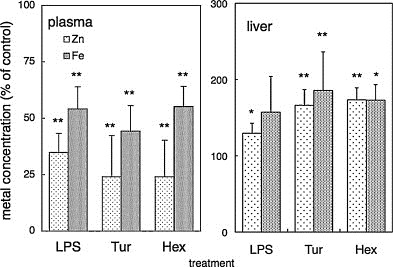
Title:Metallothionein-induced zinc partitioning exacerbates hyperoxic acute lung injury
Author(s): Lee, Sang-Min; McLaughlin, Joseph N.; Frederick, Daniel R.; et al
Source: : AMERICAN JOURNAL OF PHYSIOLOGY-LUNG CELLULAR AND MOLECULAR PHYSIOLOGY Volume: 304 Issue: 5 Pages: L350-L360 DOI: 10.1152/ajplung.00243.2012 Published: MAR 2013
Abstract: Lee S, McLaughlin JN, Frederick DR, Zhu L, Thambiayya K, Wasserloos KJ, Kaminski I, Pearce LL, Peterson J, Li J, Latoche JD, Peck Palmer OM, Stolz DB, Fattman CL, Alcorn JF, Oury TD, Angus DC, Pitt BR, Kaynar AM. Metallothionein-induced zinc partitioning exacerbates hyperoxic acute lung injury. Am J Physiol Lung Cell Mol Physiol 304: L350-L360, 2013. First published December 28, 2012; doi:10.1152/ajplung.00243.2012.-Hypozincemia, with hepatic zinc accumulation at the expense of other organs, occurs in infection, inflammation, and aseptic lung injury. Mechanisms underlying zinc partitioning or its impact on extrahepatic organs are unclear. Here we show that the major zinc-binding protein, metallothionein (MT), is critical for zinc transmigration from lung to liver during hyperoxia and preservation of intrapulmonary zinc during hyperoxia is associated with an injury-resistant phenotype in MT-null mice. Particularly, lung-to-liver zinc ratios decreased in wild-type (WT) and increased significantly in MT-null mice breathing 95% oxygen for 72 h. Compared with female adult WT mice, MT-null mice were significantly protected against hyperoxic lung injury indicated by reduced inflammation and interstitial edema, fewer necrotic changes to distal airway epithelium, and sustained lung function at 72 h hyperoxia. Lungs of MT-null mice showed decreased levels of immunoreactive LC3, an autophagy marker, compared with WT mice. Analysis of superoxide dismutase (SOD) activity in the lungs revealed similar levels of manganese-SOD activity between strains under normoxia and hyperoxia. Lung extracellular SOD activity decreased significantly in both strains at 72 h of hyperoxia, although there was no difference between strains. Copper-zinc-SOD activity was similar to 4X higher under normoxic conditions in MT-null compared with WT mice but was not affected in either group by hyperoxia. Collectively the data suggest that genetic deletion of MT-I/II in mice is associated with compensatory increase in copper-zinc-SOD activity, prevention of hyperoxia-induced zinc transmigration from lung to liver, and hyperoxia-resistant phenotype strongly associated with differences in zinc homeostasis during hyperoxic acute lung injury.
Title:Magnesium and calcium deficiencies additively increase zinc concentrations and metallothionein expression in the rat liver
Author(s):Kotani, Megumi; Kim, Ki Hyun; Ishizaki, Natsumi; et al.
Source: BRITISH JOURNAL OF NUTRITION Volume: 109 Issue: 3 Pages: 425-432 DOI: 10.1017/S0007114512001195 Published: FEB 14 2013
Abstract: : Mg deficiency increases the concentration of Zn in the liver. We investigated the effect of Mg deficiency on the expression of Zn-regulating factors such as Zn transporters and metallothionein (MT) in the rat liver. Because Ca deficiency alleviates some of the effects of Mg deficiency, we also investigated the interactions associated with Ca and Mg deficiencies. Growing male rats were given a control diet, a Mg-deficient diet, a Ca-deficient diet and a Mg- and Ca-deficient diet for 3 weeks. Mg and Ca deficiencies additively increased the mRNA levels of MT-1 and MT-2, the MT protein concentration and the concentration of Zn in the liver. The hepatic mRNA level of Zip14 increased with Mg deficiency but not with Ca deficiency. The dietary treatments did not affect the mRNA levels of other Zn transporters such as Zip1, Zip5, ZnT1, ZnT5 and ZnT6 in the liver. Ca deficiency was found to decrease the amount of femoral Zn and increase serum Zn concentration. This did not occur in the case of Mg deficiency. These results suggest that Mg deficiency enhances hepatic Zn uptake by the up-regulation of Zip14 expression and increases hepatic Zn concentration, leading to the enhancement of MT expression. Ca deficiency causes a transfer of Zn from the bone to the liver, which increases hepatic Zn concentration and, in turn, up-regulates the expression of MT. Because Mg and Ca deficiencies increase hepatic Zn concentration and increase MT expression by different mechanisms, their effects are additive.
Title: The concentrations of major and trace elements in rat kidney: Aging effects and mutual relationships
Author(s):): Shimamura, Tadashi; Iijima, Satoe; Hirayama, Mitsuhiro; et al.
Source: JOURNAL OF TRACE ELEMENTS IN MEDICINE AND BIOLOGY Volume: 27 Issue: 1 Pages: 12-20 DOI: 10.1016/j.jtemb.2012.05.005 Published: 2013
Abstract:The concentrations of 26 major to trace elements in rat kidneys aging from 5 to 113 weeks old were determined. The rats investigated were the same rats used previously reported to have 29 elements in bones (femurs). The samples were decomposed by high purity nitric acid and hydrogen peroxide. Eight elements (Na, Mg, Si, P. K, Ca, Fe and Zn) were determined using inductively coupled plasma atomic emission spectrometry (ICP-AES) and 18 elements (Mn, Co, Ni, Cu, As, Se, Rb, Sr, Mo, Cd, Sn, Sb, Cs, Ba, Tl, Pb, Bi and U) were determined using inductively coupled plasma mass spectrometry (ICP-MS). The aging effects on the concentrations of these elements and mutual elemental relationships were investigated. Analysis of variance (ANOVA) for age variations indicated that the concentrations of P, K, Mn and Mo were almost constant across the age of rats (p > 0.3). The concentration of many elements such as Na, Mg, Ca, Fe, Co, Cu, Zn, As, Se, Cd, Sn, Sb, Tl, Pb and Bi, showed significant increasing trends (p 0.01) with different patterns. Rubidium, Cs, Pb and Bi showed significant age variations but not monotonic trends. Silicon, Ni, Sr, Ba and U showed large concentration scatterings without any significant trends (p > 0.01).
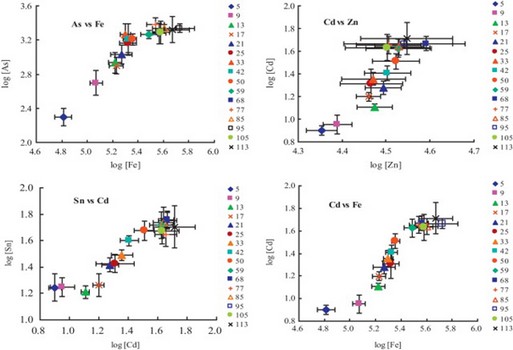 The metabolism of these elements may not be well established in the kidney. Many toxic elements such as As, Cd, Sn, Pb and Bi showed a narrow concentration range among age-matched rats. The kidney may have established metabolic mechanisms to confine or accumulate these toxic elements even though their concentrations are very low (e.g., 10 ng g(-1) of Cd). These elements also closely coupled with Fe. A cluster analysis was performed using an elemental correlation matrix and indicated that these elements, including Fe, formed a cluster. However, another cluster analysis using "an aging effect eliminated" elemental correlation showed different clustering in which the Fe, Cd cluster disappeared. (C) 2012 Elsevier GmbH. All rights reserved.
The metabolism of these elements may not be well established in the kidney. Many toxic elements such as As, Cd, Sn, Pb and Bi showed a narrow concentration range among age-matched rats. The kidney may have established metabolic mechanisms to confine or accumulate these toxic elements even though their concentrations are very low (e.g., 10 ng g(-1) of Cd). These elements also closely coupled with Fe. A cluster analysis was performed using an elemental correlation matrix and indicated that these elements, including Fe, formed a cluster. However, another cluster analysis using "an aging effect eliminated" elemental correlation showed different clustering in which the Fe, Cd cluster disappeared. (C) 2012 Elsevier GmbH. All rights reserved.
Title: The metastasis-promoting S100A4 protein confers neuroprotection in brain injury
Author(s):Dmytriyeva, Oksana; Pankratova, Stanislava; Owczarek, Sylwia; et al.
Source:NATURE COMMUNICATIONS Volume: 3 Article Number: 1197 DOI: 10.1038/ncomms2202 Published: NOV 2012
Abstract:Identification of novel pro-survival factors in the brain is paramount for developing neuroprotective therapies. The multifunctional S100 family proteins have important roles in many human diseases and are also upregulated by brain injury. However, S100 functions in the nervous system remain unclear. Here we show that the S100A4 protein, mostly studied in cancer, is overexpressed in the damaged human and rodent brain and released from stressed astrocytes. Genetic deletion of S100A4 exacerbates neuronal loss after brain trauma or excitotoxicity, increasing oxidative cell damage and downregulating the neuroprotective protein metallothionein I+II. We identify two neurotrophic motifs in S100A4 and show that these motifs are neuroprotective in animal models of brain trauma. Finally, we find that S100A4 rescues neurons via the Janus kinase/STAT pathway and, partially, the interleukin-10 receptor. Our data introduce S100A4 as a therapeutic target in neurodegeneration, and raise the entire S100 family as a potentially important factor in central nervous system injury
Aktuální výzvy pro speciální čísla časopisů/Current calls for a special issues
| Journal | Title | Deadline | internet |
| Int. J. Mol. Sci. | Redox Signaling in Biology and Patho-Biology | 30.12.2013 | http://www.mdpi.com/journal/ijms/special_issues/redox_signaling |
| Int. J. Mol. Sci | Oxidative Stress and Ageing | 20.5.2013 | http://www.mdpi.com/journal/ijms/special_issues/oxidative_stress_aging |
| Int. J. Mol. Sci. | Oxidative Stress in Cardiovascular Disease | 30.5.2013 | http://www.mdpi.com/journal/ijms/special_issues/cardiovascular-disease |
| Int. J. Mol. Sci. | Magnetic Nanoparticles 2013 | 15.6.2013 | http://www.mdpi.com/journal/ijms/special_issues/magnetic-nanoparticles_2013 |
| Int. J. Mol. Sci. | Advances in Cancer Diagnosis | 30.4.2013 | http://www.mdpi.com/journal/ijms/special_issues/cancer-diagnosis |
| Int. J. Mol. Sci. | Molecular Research in Urology | 20.4.2013 | http://www.mdpi.com/journal/ijms/special_issues/mol_res_uro |
| Int. J. Env. Res. Publ. Health | Antimicrobial Resistance Prevention and Control | 31.6.2013 | http://www.mdpi.com/journal/ijerph/special_issues/antimicrobial-resistance |
| Water | "Analytical Chemistry of Water" | 31.5.2013 | http://www.mdpi.com/journal/water/special_issues/analytical-chemistry |
| Sensors | Aptasensors | 31.10.2013 | http://www.mdpi.com/journal/sensors/special_issues/Aptasensors |
| Sensors | Ultramicroelectrode Electrochemistry | 31.8.2013 | http://www.mdpi.com/journal/sensors/special_issues/ultramicroelectrode |
| Sensors | Nanotube and Nanowire Sensors | 31.5.2013 | http://www.mdpi.com/journal/sensors/special_issues/nanotube-nanowire-sensors |
| Int. J.Molecular Sci. | Molecular Research of Carcinogenesis | 30.6.2013 | http://www.mdpi.com/journal/ijms/special_issues/molecular_research_of_carcinogenesis |
| Toxins | Bacterial Toxins and Carcinogenesis | 30.4.2013 | http://www.mdpi.com/journal/toxins/special_issues/toxin-carcinog |
| Electrophoresis | Miniaturization 2013 | 15.4.2013 | http://onlinelibrary.wiley.com/journal/10.1002/(ISSN)1522-2683 |
| Molecules | Synthesis of Nucleosides, Nucleotides and Their Derivatives | 31.8.2013 | http://www.mdpi.com/journal/molecules/special_issues/synthesis-nucleosides-derivatives |
| Molecules | G-Quadruplexes & i-Motif DNA | 31.8.2013 | http://www.mdpi.com/journal/molecules/special_issues/G-quadruplexes_i-motif_DNA |
| Int. J. Mol. Sci. | Redox Signaling in Biology and Patho-Biology | 30.12.2013 | http://www.mdpi.com/journal/ijms/special_issues/redox_signaling |
| Int. J. Mol. Sci. | Molecular Bases of Cancer Research | 30.8.2013 | http://www.mdpi.com/journal/ijms/special_issues/bases_of_cancer_research |
| Int. J. Mol. Sci. | Bioactive Nanoparticles 2013 | 15.10.2013 | http://www.mdpi.com/journal/ijms/special_issues/bioactive_nanoparticles_2013 |
| Materials | Carbon Nanotubes | 30.4.2013 | http://www.mdpi.com/journal/materials/special_issues/c_nanotubes |
| Curr. Pept.Sci. | Peptides | 30.5.2013 |
ODKAZY | LINKS




NOVÉ PUBLIKACE
Nanoparticles-based Carriers for Gene Therapy and Drug Delivery
Chemical Vapour Depositions for Carbon Nanotubes Synthesis
Quantum Dots:Biological and biomedecical applications
Archiv
23_201322_2013
21_2013
20_2013
19_2013
18_2013
17_2013
16_2013
15_2013
14_2013
13_2013
12_2013
11_2013
10_2013
09_2013
08_2013

 | Zemědělská 1/1665 613 00 Brno Budova D | Tel.: +420 545 133 350 Fax.: +420 545 212 044 |  |
 |













